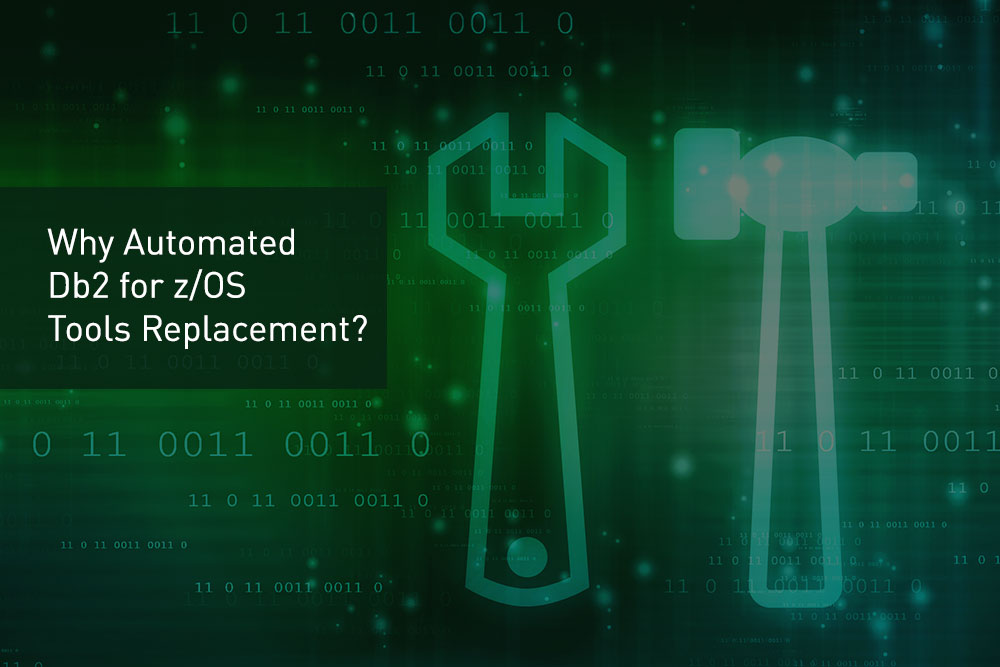Introduction
Vendor tools replacement may be driven within your business for any one of a number of different reasons. It might be that price is key, or that there is a performance gain to be had – or it could just be as simple as consolidating vendor relationships to facilitate simpler contract management.
Whatever the reason, the delivery challenge is centred around converting one set of tool use to another set. When this is an online monitor, the issues tend to be around training and feature mapping. However, when the focus is on Db2 database utility tooling, the scope of the challenge and the risk involved can be much larger.
To fully understand this, you need to be able to identify all the potential users of the outgoing tooling. How easy is it to determine which batch jobs in the combined schedule landscape make use of a specific JCL procedure to drive something in scope? How long would a skilled professional take to convert the job or JCL procedure to use the alternative product? Could this be achieved within an acceptable timescale and to the high quality that your business requires?
Working Hard
Several challenges exist with performing this conversion manually:
- Availability of skilled resources
The DBAs and Ops Analysts already working within the business can perform this migration. They have the required skills and are already familiar with your business’s current use and delivery processes. . But who is covering their work if they are working on this migration? ? Is this project work – i.e., outside of the support nature of the day to day work? How much of their time is available to provide the required support to complete this? - Dual licensing run/cost
Software vendor licensing costs can be significant. During a migration from one vendor tool to another, the business will be exposed to the cost of both licensing charges whilst there is an overlap and both tools are available in the estate. The quicker the migration is completed, the better. - Time to convert and test
If one person works on a batch job and converts it from one vendor’s tools to another, then tests it to ensure that it works as required then this will typically take between one and four hours – depending on the complexity of the job and the test environment. If there are 100 jobs in scope (very small use case) this would be 25 days of full time work. If it were 1000 jobs in scope (single business unit use case) this would be a whole year of full time work. - Scope creep
This is not the time to burn down on that technical debt! It is quite easy to turn the 1 – 4 hours into 1 – 2 days per job by “just doing this other thing” while you’re there. - Quality of delivery
This was the original driver for using automation to perform tools replacement. Technical challenges caused by incorrect manual changes can lead to hours – if not days – of corrections and re-testing. - Identification of in-scope jobs
The scope of use of a JCL procedure is not always clear in a batch schedule. It may be called by a wrapping procedure, which could, in turn, be called by a functional procedure – e.g., an Image Copy procedure that is called by an ETL procedure that is in turn called by a daily feed procedure that is called by a job that does one part of 100 daily. Identifying this job as one of the items that need to be tested when the Image Copy procedure is updated requires exceptional documentation or a reliable automation method. - Training to support new tools cutover and run
The application service and support teams will need training and additional support to cover the delivery of replacement tools to the estate. This is usually available from the vendor but is not always easy to schedule at an acceptable cost. E.g. a business with a team of 6 people providing support across three shifts might baulk at running 3 training sessions at £5000 per session and would struggle to arrange a convenient time when all 6 team members could be available for a single run.
Working Smarter
By automating the tool migration, we work on managing most of the risks outlined above. The engagement typically takes place over six phases:
- Information gathering
During this phase we gather information about the current production environment and configuration, determine the scope and level of change involved and review the requirements with the teams that use the current tools. - Scope sign-off
This milestone is critical to ensure on-time delivery. - Configuration
This is where we fine tune the automation to meet the specifics of your requirements. - Execution
Running the automation to manage the conversion of the in-scope batch jobs. - Testing
This ensures that the resulting batch jobs are functionally equivalent to the originals and confirms equivalent overall performance with the original utilities. - Delivery
Packaging and delivery of the converted batch jobs with the option of Triton to provide training and support to cover the migration period.
The result of this approach is a consistent quality delivery in a significantly reduced timescale, and with no loss in key technical resource availability within your teams.
The Business Benefits
By ensuring the quality of the delivered migration, testing and rework impact is significantly reduced compared with a handcrafted approach. This significantly shortens the development and test phase of the batch job migration and this in turn reduces the potentially significant cost of dual license charging.
Simultaneously, by freeing your technical resources to continue with primary business work, the continued delivery of business focused development and operation is maintained, whilst the project to deliver the tooling change runs in parallel. This brings enhanced quality, reduced cost and timescales, with minimised impact on existing service delivery.
To see how we’ve put our expertise into action, read our case studies of tool replacement projects for a UK bank and a major international airline.
Why Choose Triton
We specialise in helping clients modernise their products. If you need to switch from one Db2 product or vendor to another, we can help you migrate all your utilities and operations without a hitch.
Talk to our expert team about how modernising your applications could help reduce costs and increase flexibility.


